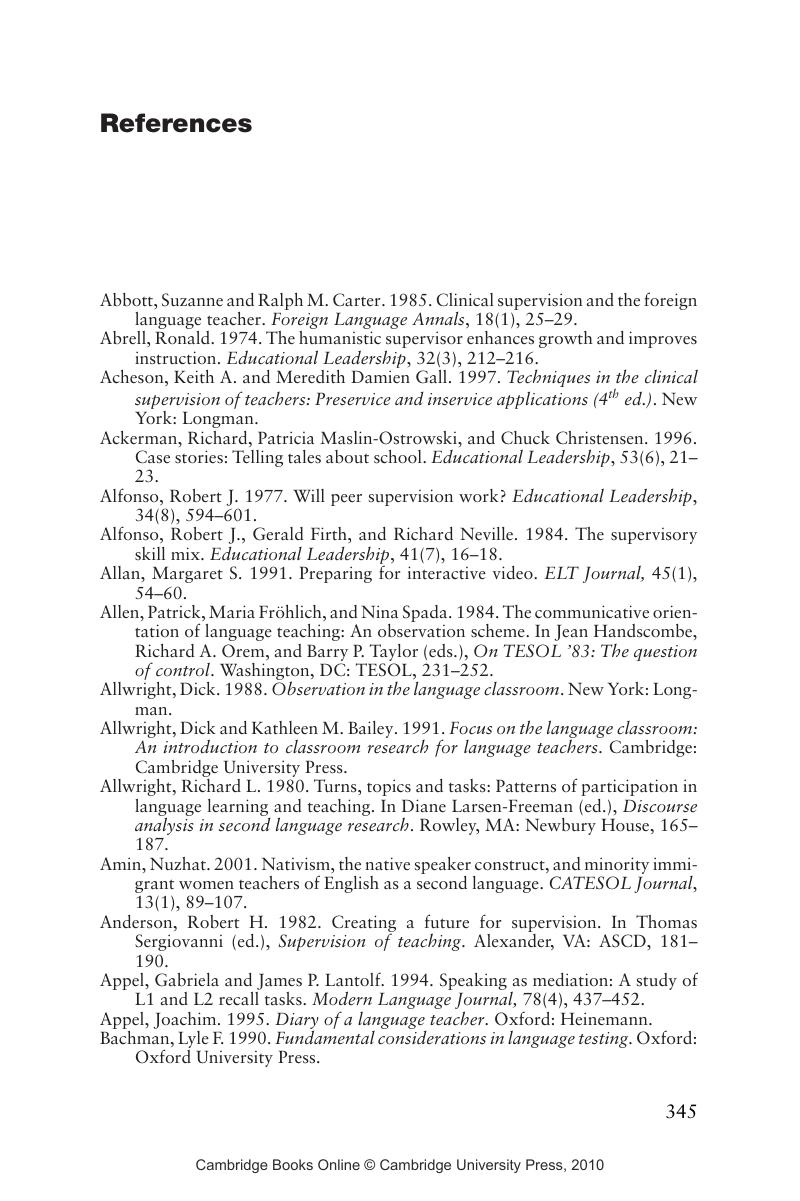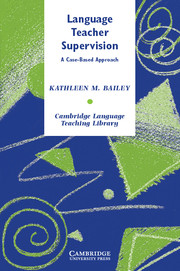Book contents
- Frontmatter
- Contents
- Preface
- Acknowledgments
- Chapter 1 Doing supervision: Roles and skills
- Chapter 2 Awareness and attitude
- Chapter 3 Autonomy and authority
- Chapter 4 Issues in observing language teachers
- Chapter 5 Manual data collection procedures
- Chapter 6 Electronic data collection procedures
- Chapter 7 The post-observation conference
- Chapter 8 Mitigation and the microanalysis of supervisory discourse
- Chapter 9 Purposes, participants, and principles in language teacher evaluation
- Chapter 10 Criteria for language teacher evaluation
- Chapter 11 Supervising preservice language teachers
- Chapter 12 Supervising teaching assistants
- Chapter 13 Supervising in-service language teachers
- Chapter 14 Supervising non-native-speaking teachers
- Chapter 15 Professionalism, paradigm shifts, and language teacher supervision
- References
- Author index
- Subject index
- References
- Frontmatter
- Contents
- Preface
- Acknowledgments
- Chapter 1 Doing supervision: Roles and skills
- Chapter 2 Awareness and attitude
- Chapter 3 Autonomy and authority
- Chapter 4 Issues in observing language teachers
- Chapter 5 Manual data collection procedures
- Chapter 6 Electronic data collection procedures
- Chapter 7 The post-observation conference
- Chapter 8 Mitigation and the microanalysis of supervisory discourse
- Chapter 9 Purposes, participants, and principles in language teacher evaluation
- Chapter 10 Criteria for language teacher evaluation
- Chapter 11 Supervising preservice language teachers
- Chapter 12 Supervising teaching assistants
- Chapter 13 Supervising in-service language teachers
- Chapter 14 Supervising non-native-speaking teachers
- Chapter 15 Professionalism, paradigm shifts, and language teacher supervision
- References
- Author index
- Subject index
- References
Summary

- Type
- Chapter
- Information
- Language Teacher SupervisionA Case-Based Approach, pp. 345 - 372Publisher: Cambridge University PressPrint publication year: 2006



